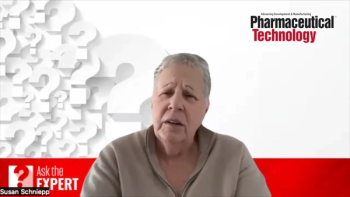
- BioPharm International, October 2023
- Volume 36
- Issue 10
- Pages: 34
Complying with Compendial Requirements
Maintaining compliance to compendial requirements should be straightforward, says Susan J. Schniepp, distinguished fellow at Regulatory Compliance Associates.
Q: Do I need to comply with all aspects of the various pharmacopeias? (e.g., United States Pharmacopeia–National Formulary [USP–NF], European Pharmacopoeia [Ph.Eur.], Japanese Pharmacopoeia, etc.)?
A: This would seem like a straightforward answer, but as with most issues related to the pharmaceutical industry, it is a bit complicated. Each pharmacopeia has various sections the industry must comply with including monographs, defining the test methods and purification for excipients, APIs, and drug products. These specific monographs often refer to general test procedures (loss on drying, pH, residue on ignition) that are consistently performed respective of the materials. The conditions for performing the test are included in the monograph, while the details of how to perform the tests are included in the general chapter. Individual monographs will specify the use of a certified reference standard that serves as the measure to which your specific item should be compared to in determining its suitability for use. It is acceptable to use in-house reference standards as long as the company has mapped its in-house standard to the official standard. The important detail to remember is to requalify your in-house standard when the lot number of the official standard changes.
Not all information in the pharmacopeias needs to be complied with. The USP–NF has a section called general information chapters, which are basic guidance advice for performing various operations such as environmental monitoring. Although these chapters are not legally enforceable, users should take notes and document their process when it conflicts with pharmacopeia’s advice. Like the USP–NF, there are some sections in the Ph.Eur. that are not legally binding. These would be general method analysis of substances used in the manufacture of medicines if they are not referenced in a monogram. The pharmacopeias allow for alternative methods to be used providing they are validated and the results generated from the alternative method yields comparable results to the compendium method. All the pharmacopeias have a process for updating their contents. It is up to the users of the pharmacopeias to make sure they are using the current version published by the governing authority for the specific pharmacopeia.
If you follow this simple advice, you should have no trouble maintaining compliance to the compendia requirements.
About the author
Susan J. Schniepp is distinguished fellow at Regulatory Compliance Associates.
Article details
BioPharm International
Vol. 36, No. 10
October 2023
Page: 34
Citation
When referring to this article, please cite it as Schniepp, S.J., Complying with Compendial Requirements. BioPharm International 2023 36 (10).
Articles in this issue
about 2 years ago
Hi-Fidelity Fill/Finish for Biologicsabout 2 years ago
ML and AI Implementation Insights for Bio/Pharma Manufacturingabout 2 years ago
Navigating Biologics Developmentabout 2 years ago
Optimizing Fermentation Processes for Biologics Manufacturingabout 2 years ago
Meeting Complexity Demands with Innovative Affinity Ligandsabout 2 years ago
Innovations and Trends in Aseptic Manufacturing Processesabout 2 years ago
Capturing the Nuances of Immune Cells Using Glycobiologyabout 2 years ago
FDA Inspections Face Overhaulabout 2 years ago
Washington, DC Houses mRNA Leadershipabout 2 years ago
Renewed Hope for Alzheimer’sNewsletter
Stay at the forefront of biopharmaceutical innovation—subscribe to BioPharm International for expert insights on drug development, manufacturing, compliance, and more.




